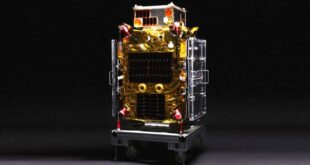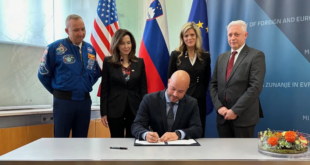
After the failure of Angosat-1 shortly after its launch late last year, Angola is again partnering with Russia to build and launch Angosat-2 by 2020.
Angola’s first communications satellite, Angosat-1, failed shortly after reaching orbit. It was launched in December 2017 from the Baikonur Cosmodrome in Kazakhstan on board a Zenit 3F rocket. Russia’s RSC Energia, a subsidiary of the state-run space industry player Roscosmos, built the satellite.
But on 27 December 2018, the Russian manufacturer announced contact had been lost with the satellite. Communication was restored the same week, but, soon after, the satellite stopped sending data and Energia confirmed it was inoperable.
A 14 May 2018 statement from the Gabinete de Gestao do Programa Espacial Nacional (GGPEN – the Angolan national space agency) announced that Angosat-2 will launch in 2020 at no additional cost to Angola. This followed an April 2018 statement from RSC Energia stating that it will “fulfill all contractual obligations to participate in the development of the satellite communication and broadcasting system of Angola.”
“In the near future, [the] technical parameters of Angosat-2 will be agreed upon, and we’ll begin to manufacture it,” Vladimir Sontsev, the general director of RSC Energia, was quoted in the statement.
Asked about the parameters of the designed satellite, a spokesperson for RSC Energia told SpaceNews that, under “the terms of the agreement with [our] Angolan partners, we cannot provide this information” and declined further comment.
According to a report in Space News, Angola’s National Space Programme Management Office says Angosat-2 will provide the same coverage as Angosat-1: “cover[ing] the whole territory of Angola, Africa and parts of Europe, providing telecommunications services with 16 transponders in C-band and 6 Ku-band transponders.”
The Angolan government initiated the Angosat project by decree in 2006. Also in 2006, a Russian consortium formed by state-run companies began to study the viability of the project. In 2009, Angola signed an agreement with Russia to develop the Angosat-1. As part of the deal, Energia built a control center in Funda, in north-western Angola, manned by local employees.





